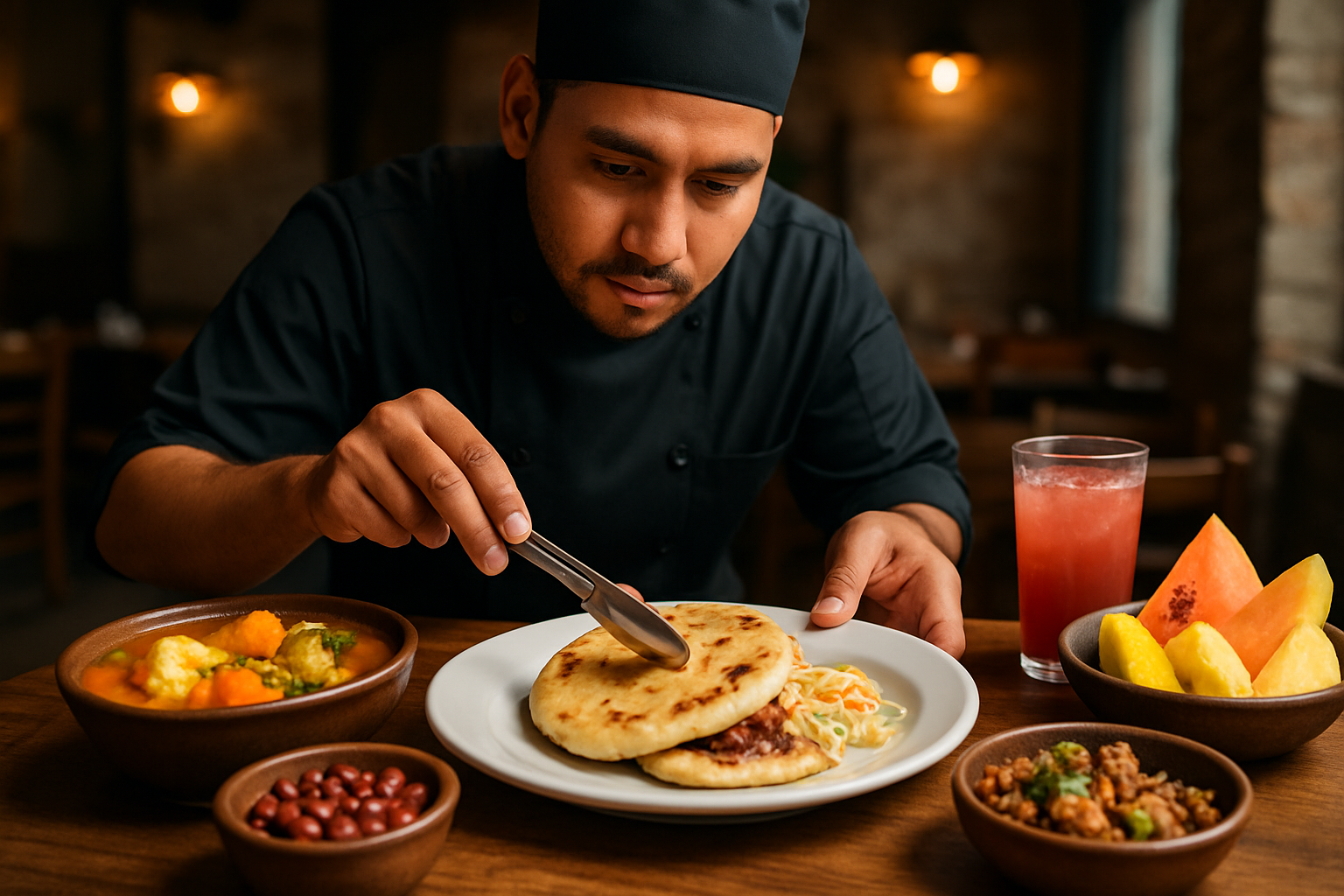The Hidden Gem: Exploring the Delights of Salvadoran Cuisine
Salvadoran cuisine, subtly complex and tantalizingly flavorful, has quietly been making a splash in the international food scene. Its humble roots and fusion of indigenous and Spanish influences paint a fascinating culinary landscape that is both familiar and exotic. In this article, we take a deep dive into the rich flavors of Salvadoran gastronomy, exploring its traditional dishes, innovative adaptations, and the way it's reshaping the global food narrative.

The Roots of Salvadoran Cuisine
Salvadoran cuisine, like many others, is a tapestry woven from centuries of cultural exchange. It’s a blend of indigenous Pipil and Lenca influences, with a hint of Spanish culinary tradition. One of the staples of Salvadoran cuisine is maize, which is used in a myriad of dishes, from the iconic pupusas to the less-known, but equally delicious, tamales pisques.
The Iconic Pupusa
Pupusas are arguably the most famous dish from El Salvador, and for good reason. These thick corn tortillas are typically stuffed with a variety of fillings such as cheese, beans, and chicharrón (a type of pork rind), and served with a side of curtido (a spicy cabbage slaw) and salsa roja. The result is an explosion of flavors that beautifully encapsulate the essence of Salvadoran cuisine.
Beyond Pupusas: Diverse Delights
While pupusas may be Salvadoran cuisine’s poster child, there are other culinary gems worth exploring. Take, for instance, the yuca frita, deep-fried cassava served with pickled cabbage and succulent pieces of fried pork. Or the sopa de pata, a hearty soup made from cow’s feet, tripe, and tender chunks of plantains and corn. Each dish carries its unique signature, adding to the rich tapestry of Salvadoran gastronomy.
Salvadoran Cuisine and Innovation
Salvadoran cuisine is not just about traditional dishes. It’s a living, breathing entity that continues to evolve and innovate. Chefs are putting a modern spin on classic Salvadoran dishes, introducing new ingredients and techniques. From gourmet pupusas to haute cuisine interpretations of traditional dishes, Salvadoran food is proving that it can hold its own on the global culinary stage.
Salvadoran Beverages: A Refreshing Tale
No exploration of Salvadoran cuisine would be complete without a mention of its beverages. Whether it’s the deliciously sweet horchata, made from morro seeds and packed with flavors of cocoa, cinnamon, and sesame, or the refreshing ensalada, a fruit cocktail drink, Salvadoran beverages offer a perfect complement to its vibrant food culture.
-
Salvadoran cuisine is a fusion of indigenous and Spanish influences.
-
Pupusas, thick corn tortillas filled with cheese, beans, or chicharrón, are the most famous Salvadoran dish.
-
Other notable dishes include yuca frita and sopa de pata.
-
Salvadoran cuisine continues to evolve and innovate, with chefs putting modern spins on traditional dishes.
-
Salvadoran beverages, like horchata and ensalada, round out the culinary experience.
Conclusion
Salvadoran cuisine is a hidden gem in the world of gastronomy, offering a delightful mix of traditional dishes and innovative culinary ideas. Its flavors are robust, its history rich, and its potential for growth boundless. As more people discover the wonders of Salvadoran cuisine, it’s only a matter of time before it takes its rightful place on the global culinary stage. So, the next time you’re looking to expand your culinary horizons, why not take a detour and explore the tantalizing world of Salvadoran gastronomy?





